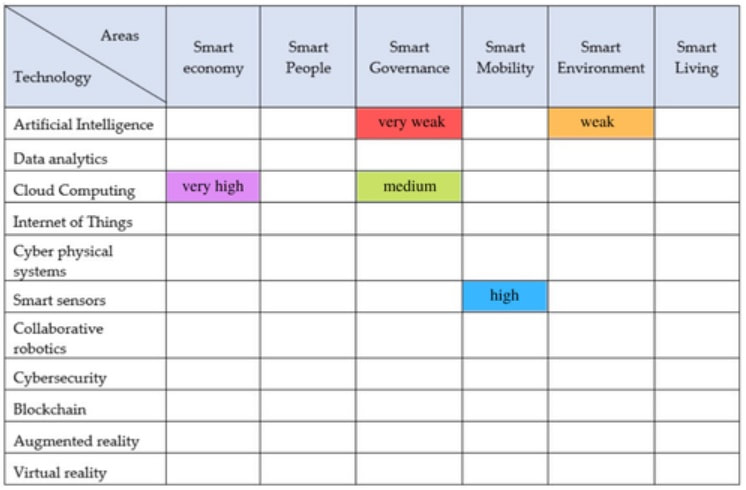|
The SMART project is aimed at developing new competencies of the SMEs managers to manage deep-tech businesses in one very fast-growing market - the smart cities. The penetration of so-called smart city technologies results in the creation of new markets and requirements for new skills. On the basis for the achievement of this purpose is laid the map of digital smart disruptions. This short article explains some important terms and the approach implemented in this project. What is a Map of Digital and Smart Disruptions (in the context of smart cities)?The picture is worth a thousand words - Fred R. Barnard. The map of digital and smart disruptions provides an easy for understanding and learning overview and analysis of how digital and disruptive technologies (innovations) do shape the smart city concept. The map includes the results generated by the focus group and corrected later by the partners with the results from the research on the technologies advances, level of change and impact, performance, purpose, and fit. The map is a two-dimensional cross factorial analysis matrix made with different instruments in diverse forms (Fig.1). Fig.1. Mapping the disruptive smart city technologies (the filled areas are only exemplary) The ultimate purpose of a map is to improve the scenario planning of businesses and the cities in the process of their transformation into smart cities and to point out the opportunities for involvement of the businesses in the process. So, this can be treated as a sample of an opportunity map for every city in the process of urban management and for every company in the process of innovation management. In the case of the project SMART, the map will present the results of the studies and research of the project partners in a systematic and simplified way, based on:
What is a Disruptive Smart City Technology?The definition of the disruptive innovation given by Clayton Christensen is the innovation that creates a new market and value network and eventually disrupts an existing market and value network, displacing established market-leading firms, products, and alliances. The following benefits and changes coming from the disruptive innovations are identified:
Following this definition, it is easy to presume that in general the “disruptive smart city technology” is any kind of emerging, advanced & digital (but not only) technology that can generate disruptive innovations creating benefits and many changes in the context of an urban (territorial) area and if this process is well managed it should result in a better life of the citizen. What Does the Process of Mapping the Smart City Disruption Mean? The mapping is a structured process, focused on a topic or construct of interest, involving input from many participants, that produces an interpretable pictorial view (concept map) of their ideas and concepts and how these are interrelated. The mapping helps partners to think more effectively as a group without losing their individuality. It helps the project group to manage the complexity of the vision on the smart city disruptive technologies without trivializing them or losing detail. The mapping process is one of the portfolios of many other similar methods that management and social scientists have developed like brainstorming, brainwriting, nominal group techniques, focus groups, affinity mapping, Delphi techniques, facet theory, and qualitative text analysis. The mapping process is focused on the major shifts from the business perspective and how these changes will affect the growth. It uses focus groups to understand and analyse the impact of smart city technologies and their application for business growth. The trends, types of technology, and levels of transformation are included in studying within the process. Consequently, the project partners have to study a framework of the following five dimensions of these technologies:
The study includes the level of impact and change of the emerging technologies - so, what does exist now and what is the current maturity level (according to Gartner). What Stages Does the Process of Mapping Include in a Focus Group? The process is placed in a focus group that is facilitated by the leader of the mapping process. A mapping process in a such group involves five steps that can take place in a period of time, planned for the output and depending on the project development situation.
The Article was first published on the Smart by Design website, blog content. |
KISMC TeamBlog post by our team, innovation contributors, VIP members, blog guests, etc. Archives
January 2024
Categories
All
|
|
The Knowledge, Innovation and Strategies Management Club is a non-profit organisation set up in Sofia, Bulgaria in 2012 to foster knowledge and innovation management across South East Europe. KISMC is supporting the development of the innovation ecosystem in the region by bridging the gap between education, research and business.
|
© COPYRIGHT 2013- 2021. KISMC. ALL RIGHTS RESERVED.
|



 RSS Feed
RSS Feed